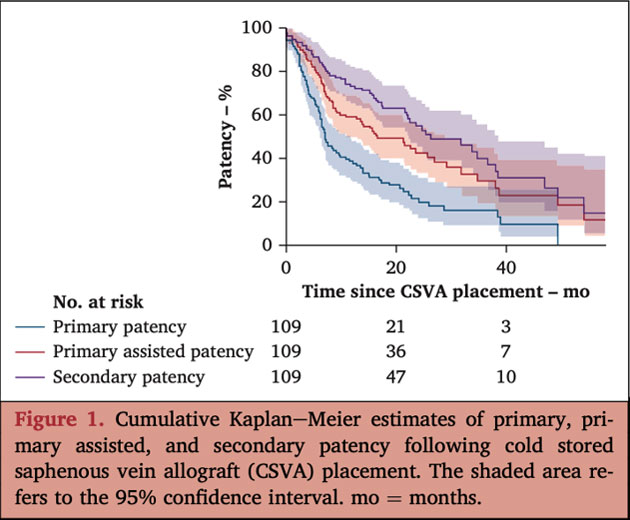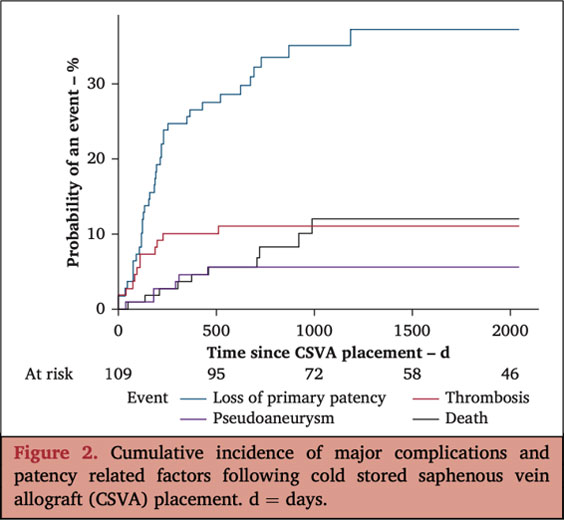Outcomes of cold stored saphenous vein allografts for haemodialysis vascular access
Selected in ESVS Journal by Perrine Darpy
In this two-center retrospective observational study, 109 patients with end-stage renal disease requiring hemodialysis were treated with cold-stored saphenous vein allografts (CSVAs) for vascular access. The study aimed to assess the patency of CSVAs over time and to evaluate associated complications. Findings showed that primary patency rates were comparable to those observed with prosthetic ePTFE fistulas, while infection rates appeared to be lower. These results support the potential of CSVAs as a viable alternative for selected patients needing vascular access.
References:
Authors: Rita Cherkaoui, Eric Picard, Pascal Branchereau, Charbel Saba, Lucie Derycke, Nicla Settembre, Serguei Malikov, Elsa Madeleine Faure
Reference: Eur J vasc endovascular surg (2024) 68, 397-404
DOI: DOI: 10.1016/j.ejvs.2024.04.042
Read the abstractObjective:
To evaluate the current patency of cold-stored saphenous vein allografts for haemodialysis vascular access and to assess their outcomes by describing the incidence of each complication and specific factors affecting their patency over time.
Study:
Retrospective, two-center, observational.
Population:
109 patients with end stage renal failure requiring haemodialysis.
Endpoints:
Primary patency, assisted primary patency, secondary patency, and associated complications.


Outcomes and conclusion:
Primary patency comparable to an ePTFE AV fistula, with a reduction in the infection rate.
Get the latest clinical cases and breaking news delivered straight to your inbox!


Comments: